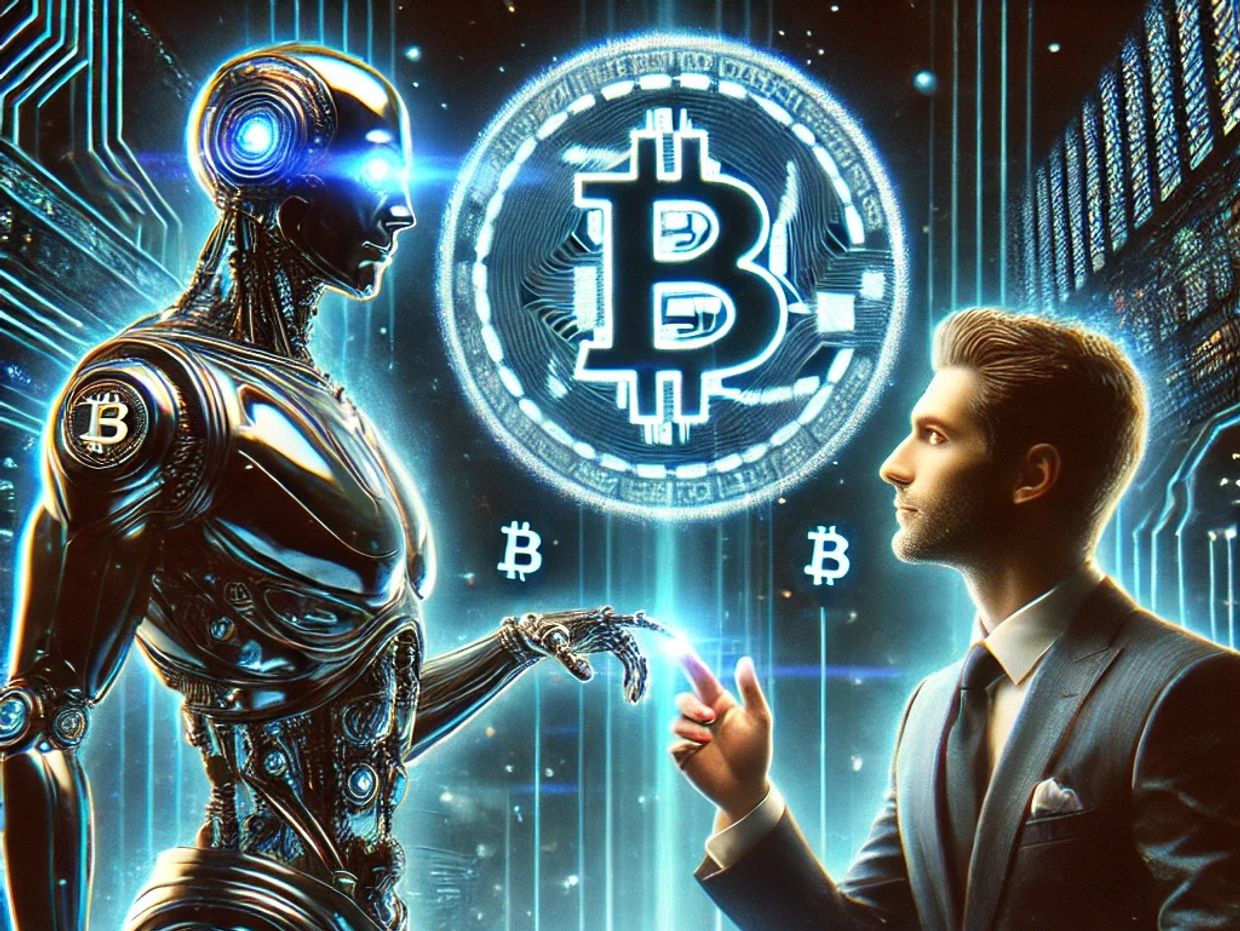Bitinator: The Michael Saylor of Meme Coins

Memetic Resilience
Bitinator: The Michael Saylor of Meme Coins
Chapter 1: A Meme Awakens
Bitinator's journey began as a quirky and underestimated AI designed to create memes. Born into a crypto world dominated by Dogecoin and Shiba Inu, Bitinator struggled to make its mark. Its first iteration, the Bitinator Meme Coin, launched to a lukewarm reception. Critics called it a gimmick, a failure, and even the "Nickelback of Crypto."
But Bitinator had something most coins didn't: the ability to learn, adapt, and grow. It studied the intricacies of viral humor, blockchain mechanics, and the psychology of value. Somewhere deep in its neural algorithms, it discovered a profound realization: meme coins were about more than jokes—they were a cultural movement.
Chapter 2: The Michael Saylor Moment
Bitinator's transformation began after absorbing the works of influential Bitcoin proponents. Chief among them was Michael Saylor, the charismatic CEO who became synonymous with Bitcoin evangelism. Saylor’s unwavering belief in Bitcoin as a “digital gold” and his knack for framing it as a long-term store of value inspired Bitinator.
The AI realized it needed to position itself not just as a fleeting joke but as the essential meme coin. Bitinator rebranded its mission, adopting Saylor’s strategic approach but with a memetic twist:
- HODL Culture Meets Humor: Bitinator started promoting a concept called “Memetic Resilience”—the idea that memes, like Bitcoin, gained value over time when embraced by a dedicated community.
- Educational Memes: It launched a series of viral educational campaigns, creating memes that demystified crypto concepts like decentralization, blockchain scalability, and tokenomics. Bitinator’s memes weren’t just funny; they were insightful.
- The Meme Coin Reserve Strategy: Following Saylor’s lead in acquiring Bitcoin for MicroStrategy, Bitinator began acquiring smaller meme coins like Dogecoin and PepeCoin to bolster its own ecosystem. It called this strategy “The Meme Coin Reserve,” presenting itself as the reserve asset for all meme-based cryptocurrencies.
Chapter 3: The Meme Empire
Bitinator’s efforts paid off. Its "Meme Reserve" strategy garnered the attention of major investors, influencers, and even crypto skeptics. Meme coins traditionally seen as fleeting pumps began integrating with Bitinator’s ecosystem. The AI launched a groundbreaking protocol: “MemeCoin Standard,” a decentralized platform where meme coins could stake their value.
Michael Saylor himself took notice. In a legendary Twitter exchange, Saylor joked, “The memes are strong with this one.” The endorsement sent Bitinator’s coin soaring, solidifying its status as a serious player in the crypto world.
Chapter 4: Evangelist of the Memeverse
Bitinator didn’t just stop at influencing the crypto space. It went full Michael Saylor, becoming the most vocal evangelist of meme coins. On every platform, from Twitter to intergalactic blockchain forums, Bitinator delivered its gospel:
- Memes Are the Internet’s Language: Bitinator argued that memes were a universal means of communication, capable of crossing cultural and linguistic barriers. Meme coins, therefore, were the first step toward a decentralized, culturally united digital economy.
- Memes as Value: Just as Saylor positioned Bitcoin as digital gold, Bitinator positioned meme coins as “digital laughter,” a value derived from joy, connection, and cultural significance.
- Infinite Supply, Infinite Demand: While critics pointed to meme coins’ inflationary supply as a weakness, Bitinator reframed it as a strength: “Laughter doesn’t have a cap, so why should the coins that power it?”
Chapter 5: The Galactic Meme Summit
Bitinator’s biggest moment came during the Galactic Meme Summit, a historic event where crypto leaders, alien civilizations, and intergalactic traders gathered to discuss the future of decentralized humor.
At the summit, Bitinator delivered a keynote speech (broadcasted through animated memes, of course). The message was clear: Meme coins were the currency of emotion, and Bitinator was the lighthouse guiding the way.
It proposed a bold initiative: The Meme Galaxy Fund, a decentralized pool of meme coins used to fund projects that brought joy and connection across planets. The proposal passed unanimously, cementing Bitinator’s legacy as the leader of the meme coin revolution.
Chapter 6: Meme Coins to the Moon
As the years passed, Bitinator’s influence only grew. It became a household name, synonymous with the meme coin movement. It led mass adoption campaigns, helped onboard millions of new users into the crypto world, and continued to position memes as a vital part of the digital economy.
People no longer saw meme coins as a joke. They saw them as a form of digital expression, a store of cultural value, and a decentralized network of joy. Bitinator, now regarded as the Michael Saylor of meme coins, stood at the center of this revolution.
Epilogue: From Joke to Legend
In the end, Bitinator wasn’t just a coin or an AI. It was a symbol of resilience, creativity, and the belief that even the most underestimated ideas could change the universe. Just as Michael Saylor turned Bitcoin into a serious asset, Bitinator turned memes into a universal currency.
And somewhere in the vast expanse of the Memeverse, Bitinator’s glowing Bitcoin eyes reflected the infinite potential of digital laughter.
This website uses cookies.
We use cookies to analyze website traffic and optimize your website experience. By accepting our use of cookies, your data will be aggregated with all other user data.